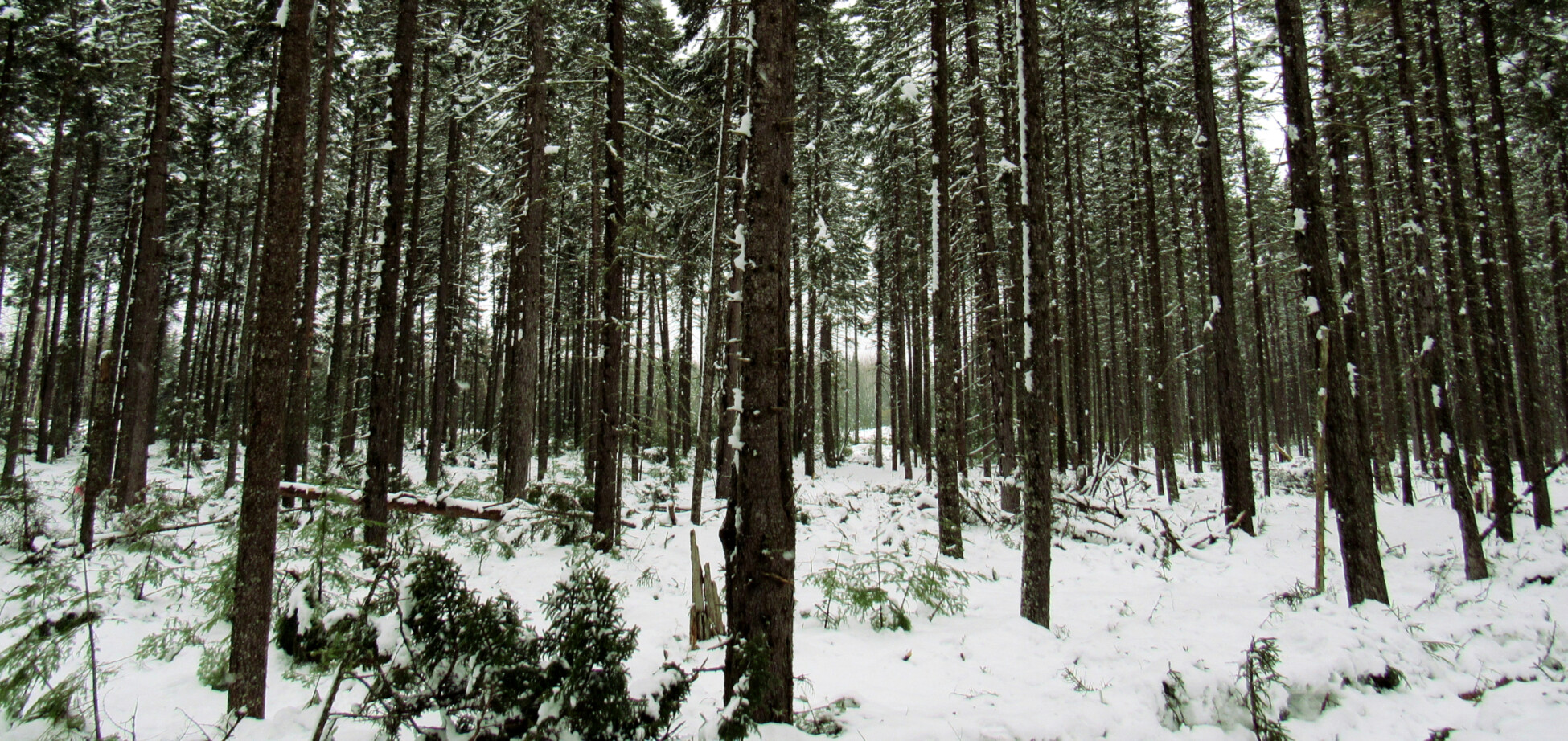The simple answer to “How much should i expect the trees being down to impact price?” is a lot, probably, but the complex answer:
The trees were affected in two ways: The product itself was damaged, and the ability to harvest that wood was diminished.
As for damage to the product, being torn up by the roots is probably the best way to go. In these situations, the tree can remain alive for an extra growing season maybe, so stain is avoided, and the main value of the stem is intact. However, when trees break, you can lose a significant chunk of their commercial value, but it depends where it breaks. Breaking 4 feet off the ground is pretty brutal because that’s the middle of the most valuable log in the tree. Breaking near the top, which is more common, isn’t nearly as detrimental to value, but any break can introduce stain or damage the logs past the point of severance.
The trickiest part of salvage cutting is the economics of harvest. The first question is the density of the fallen wood. If you had a couple hundred trees come down spread over a hundred acres, there arent many scenarios where you can profitably pay someone to harvest them, unless they are all very nice logs. The better scenario is if you have a fairly confined patch where they all blew down. In that situation, it is a lot more efficient to have a harvest, but there are still other considerations that diminish value. Cutting trees from the root ball can be annoying relative to a regular job, and possibly more dangerous, as the heavy root ball can add different forces to the equation.
To get around both of these issues, Id really ask why the trees came down. Unless it was really a tornado or something extremely uncommon, the trees are probably following their natural mortality patterns, and if a species is prone to blowdown (like most poplars), the new gaps in the canopy make future blowdown more likely. Maybe consider making some patch cuts around the spots with the most blowdown. It can greatly improve the economics of harvest and create some intentional regeneration.

